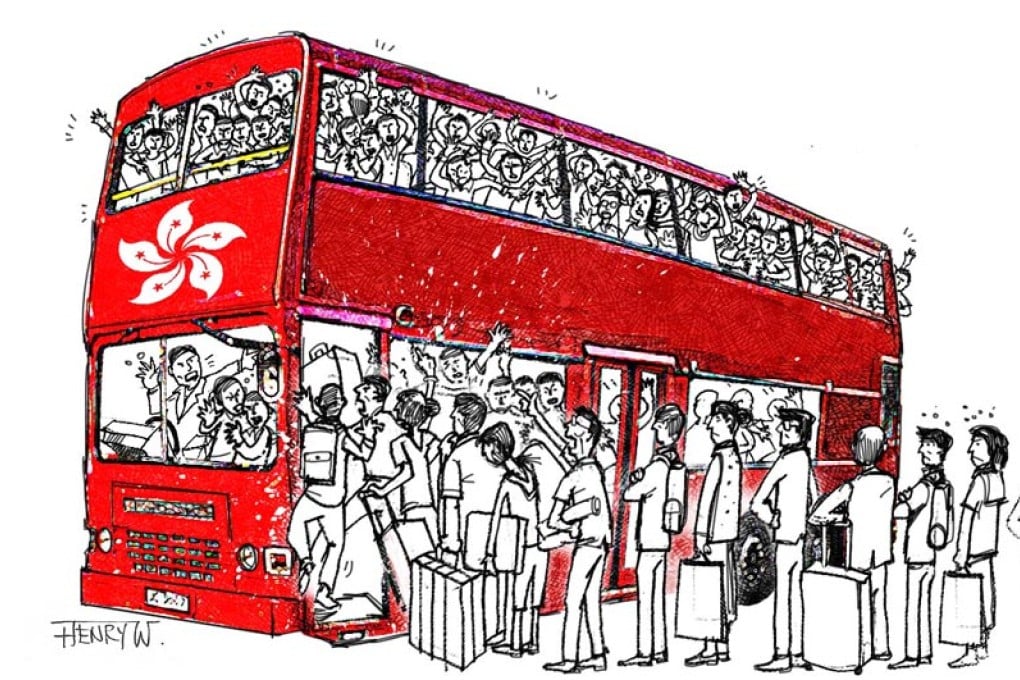Don't blame visitors for lack of vision in Hong Kong's public transport policy
Franklin Koo says the Hong Kong government's policy to draw ever more visitors here with little thought about how it might overburden our transport system is what's really to blame for the overcrowding and congestion

I once wrote that Hong Kong must have the ability to identify and solve its practical problems. Since the end of Occupy Central, many now believe the 47 million mainland visitors are to blame for the city's troubles.
It is a fact that mainland visitors, along with their luggage, are causing overcrowding, especially on public transport. But do these visitors deserve all the blame, or is it partly due to ineffective policy?
Despite the fact that the local public transport infrastructure is at peak capacity, there are grandiose plans in place, such as the high-speed rail link and the third runway, plus the newly built cruise terminal. It seems that injecting more visitors into Hong Kong is an economic policy that is taking priority over the quality of the lives of normal citizens, while also ignoring the sustainability of our public transport infrastructure.
It is likely that more visitors will generate even more problems, since that will aggravate an already overloaded transport system. Imagine putting more people into a lift and ignoring the overload warning; it is a recipe for disaster.
There are no overload warnings on buses or trains; everything seems fine on the surface. Hong Kong is proud to have a clean, safe and convenient transport system, the reason it received the award for "best city in the world for commuters" in 2014.
The MTR Corporation has just announced a net increase in profits of 19.8 per cent, partly due to a record-breaking 4.5 per cent increase in ridership.